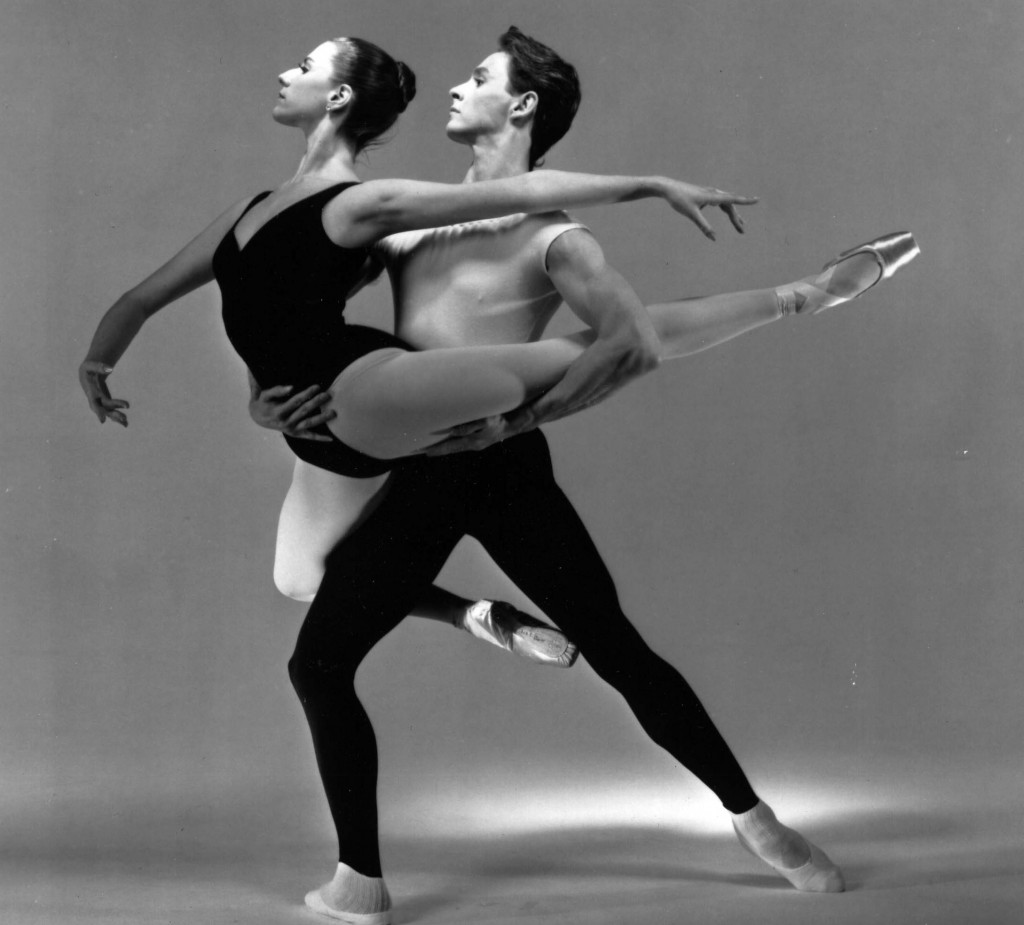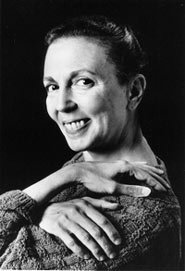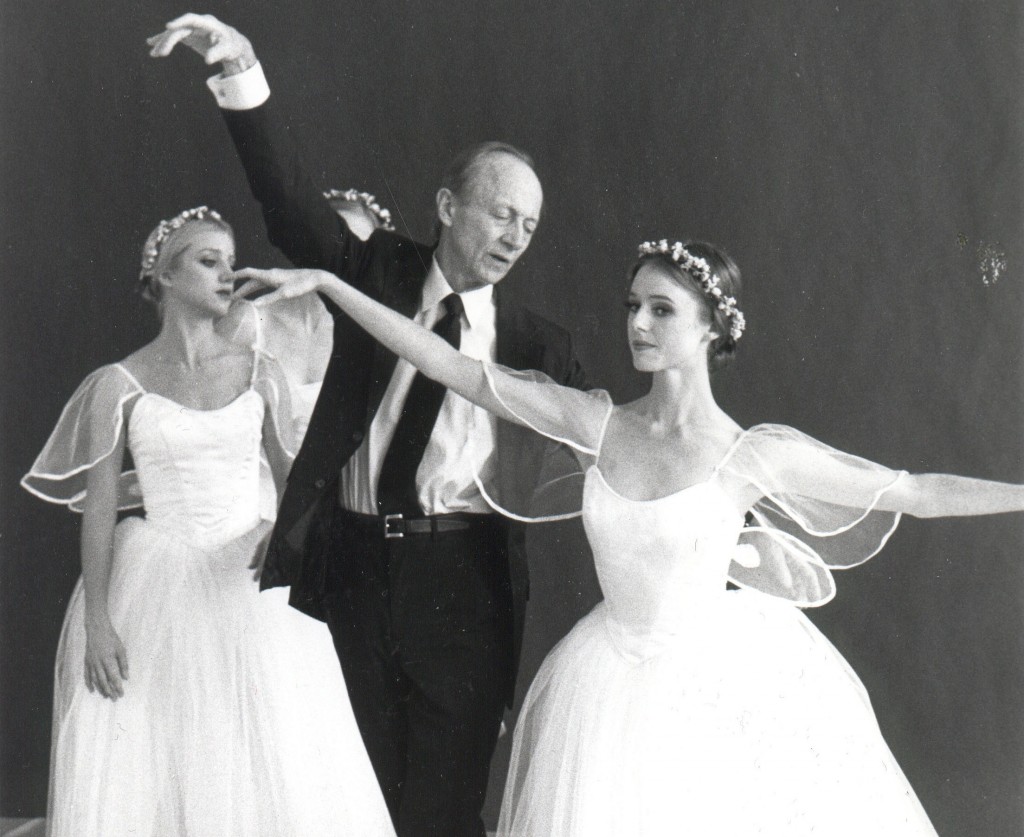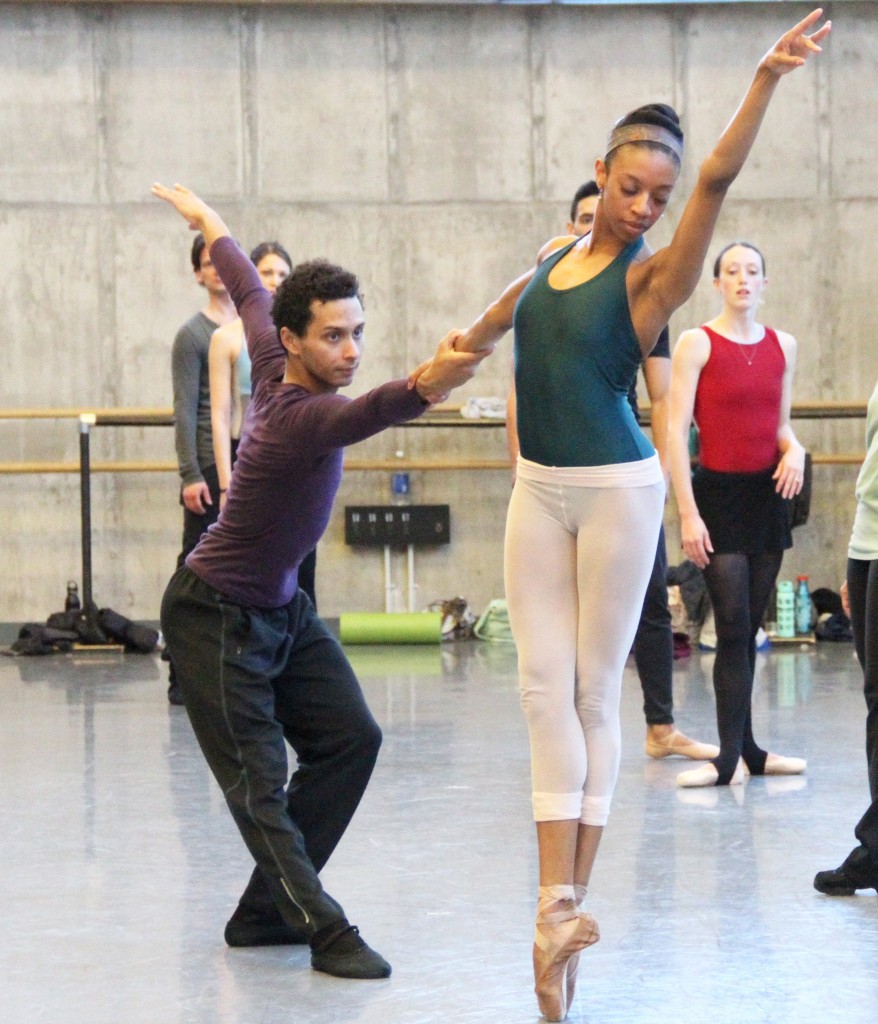SENSE OF HUMORS: Ballet brings top stager to set ground-breaking Balanchine classic
By Paul Horsley
Victoria Simon remembers first seeing George Balanchine’s The Four Temperaments when it was almost new, as a youngster studying at the School of American Ballet in the 1950s and, later, as a dancer with New York City Ballet in the ’60s. “It broke new ground,” she said recently of the 30-minute piece, which anchors the Kansas City Ballet’s Spring Program starting May 8th. “It’s a fascinating ballet.” Victoria, a top stager of Balanchine’s works since 1965 (currently for the George Balanchine Trust), also remembers the late Todd Bolender in the “Phlegmatic” movement, for which he was famous: Todd would later lead the Kansas City Ballet, of course, and would become a good friend as well. “He was a bit of a Gumby doll,” Victoria said, with a laugh, of Todd’s rubbery physique, discussing how Balanchine choreographed different movements of the piece with specific dancers’ physicalities in mind.

The Four Temperaments was one of Balanchine’s early sensations: With music commissioned in 1940 from Paul Hindemith (who had just fled the Nazis that year), it received a tardy premiere in 1946 with the company then called Ballet Society, a precursor to the NYCB. It helped establish the Russian-born choreographer as a new force, and it also featured one of the greatest ballet scores of all: a concerto-like set of theme-and-variations for piano and strings. According to the temperaments defined by Hippocrates in the 4th century BCE, each personality type is governed by a body “humor”: You were melancholic because of black bile, sanguine because of blood, and so on. The physiological science may have been primitive, but it was an ideal formula for music and a perfect setup for a moody series of dances.
“I had some input from Todd the last time, because he was still alive,” Victoria said of the company’s most recent performance of Four Temperaments in 1998. Each of the four movements requires a distinctive physical type, she said: “Phlegmatic,” for example, was ideally suited to the controlled looseness of Todd, for whom it was originally created. “I try to find a similar kind of physicality in the dancers who do his role,” Victoria said. Similarly the other roles have to be appropriately cast, no small task in such a complex piece. “ ‘Melancholic’ has to be a very flexible person, so you don’t want to put somebody who’s very stiff up there,” she said. “And for ‘Sanguinic,’ which technically is the most difficult part, you want dancers with good technique.”

Victoria was one of the first Balanchine stagers, starting her career in 1965 when “Mr. B” had become so busy making new works that he no longer had time to set them on other companies. The former NYCB dancer has 25 or so ballets rolling around in her head (she can teach all the parts, male and female, with notes she’s kept over the years and an occasional glance at a video). For 50 years she has traveled the globe unceasingly, staging everything from Apollo to Allegro Brillante, Serenade to Square Dance, according to the rigorously exacting requirements of the Balanchine Trust.
The goal, she said, is “to be as honest to what Balanchine would want. Which is also making the dancers who are standing in front of me look as good as possible. And also to challenge them. Sometimes Balanchine gave dancers who couldn’t jump very well something that had a lot of jumping in it, just to get them get better at that.”
You might think that ballet companies work up major pieces ahead of time, in advance of the arrival of the “stager,” but that’s not how it works. “The day I arrive, I cast it, with the input from (KCB Artistic Director) Devon Carney,” Victoria said. “Actually a lot of the dancers in Kansas City I do know, even though there’s a lot of new dancers: They come from companies that I’ve worked with. … But there are several there that I have not worked with, so I will look at them and you know, talk to Devon.”

Normally a stager will watch a company in “class,” the daily exercise in which dancers warm up with a routine series of foundational ballet steps. But often that’s not enough. “Sometimes you can’t tell just from watching a class who is good on stage,” Victoria said. “Sometimes the best dancers don’t show up very well in class, but they’re dynamite on stage. So that’s when you have to talk to the director to get his or her input.” At that point she might hold a sort of “mini-audition,” she added, “just to see which dancers, especially for the principal roles, are the best.”
What makes some dancers or former dancers good stagers and others not? “It’s a combination of many things,” she said. “Being able to deal well with people, whether it’s a small group of principals or a full corps de ballet. Being able to show the steps, and to verbalize. Also, some people just have a better memory, whether it’s muscle memory or visual memory. Both of those come into play.”

Some dancers are great artists but don’t stage well “because they are only aware of what they’re doing, but not aware of what other people are doing on the stage.” She did dance in Temperaments at NYCB (“Melanchoic”) but said she still found it challenging to stage at first. “Because especially the male roles were so foreign to me at that time, teaching them. Now I’ve staged it so many times I feel like I’ve danced all the roles.”
The KC Ballet’s “Dances Daring (Then and Now)” runs May 8th through the 17th at the Kauffman Center. It also includes Edwaard Liang’s ‘Wunderland,’ the pas de deux from Todd’s ‘The Still Point’ and Amy Seiwert’s ‘Concertino.’ Call 816-931-2232 or go to kcballet.org.
To reach Paul Horsley, Performing Arts Editor, send email to phorsley@sbcglobal.net.
[slider_pro id=”2″]
[slider_pro id=”3″]
Features

Tyrone Aiken danced prodigiously as a youth, trained at The Ailey School as a young adult, worked as a professional dancer at the height of the New York dance ferment,…

CAROLINE DAHM Dancer, choreographer, producer, master teacher, adjunct dance professor at The UMKC Conservatory, assistant director at Wylliams/Henry Contemporary Dance Company What I love about the Kansas City performing-arts scene: Kansas…

It’s difficult to remember what the Kansas City skyline looked like 20 years ago, before the Kauffman Center for the Performing Arts began to take shape at 16th and Broadway.…






